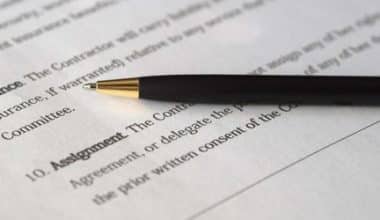High-Performance Planning for an Employee is explained in this article practically. It defines monitoring performance planning, provides an example, explains how to properly incorporate objectives and performance factors, and explains which steps should be taken in the process. You will comprehend the fundamentals of this effective employee development and stress management tool after reading this article. Enjoy reading!
What is Performance Planning?
Performance planning is a strategic process that ensures employees meet goals. Setting specific, measurable, achievable, relevant, and time-bound goals for employees, followed by developing a plan to assist them in achieving those goals. Performance planning ensures that employees are working toward the organization’s goals and have the tools and resources they need to succeed. It also enables organizations to monitor employee progress and identify areas where employees require additional assistance.
What are the Benefits of Performance Planning?
One benefit of performance planning is that it enables managers and employees to identify goals and objectives that must be met for the employee to be successful. Furthermore, performance planning can assist in identifying any gaps in the employee’s skills or knowledge that may need to be filled. Performance planning can also help to improve communication between managers and employees and ensure that employees are aware of the standards that are expected of them.
Furthermore, performance planning can assist in identifying areas where additional training or development is required for employees. Last but not least, performance planning can aid in the documentation of employee performance, which can then be used as the foundation for salary reviews or other types of performance-based evaluations.
Who Uses Performance Planning?
Managers in organizations use performance planning as a crucial process to ensure that they are capable of meeting the organization’s goals and objectives. It is also used to ensure that employees can meet the organization’s expectations and improve their performance. Managers use performance planning to assess employee performance and identify areas where employees may need more training or development to improve their performance.
Performance Planning Process for Employee
The steps in employee performance planning are as follows; the initial step in performance management is performance planning. Once the planning phase is complete, you will proceed to the implementation phase, tracking and reviewing the results.
#1. Determine each person’s strengths
Begin by learning about your employees’ capabilities, which will allow you to adjust their responsibilities and create custom performance goals. The SWOT analysis is a useful tool that can be used in this situation. You can either conduct a SWOT analysis on each individual working under you or have your team conduct their own personal SWOT analysis.
#2. Establish performance goals
Establish performance goals, taking into account his or her strengths. Include the employee in this step; their participation will help them understand the plan and where they are going.
#3. Establish employee responsibilities
When you’ve established the goals that an individual must achieve within a certain time frame, it’s easier to define their responsibilities. Their responsibilities may change as a result of a performance review, but they will always be assigned a basic set of tasks.
#4. Describe the required resources
Once the performance goals are clear, identify the resources necessary to accomplish them. These could range from computers and training materials to action plans.
#5. Make a development strategy.
This is where you develop a plan or plans to develop the skills, knowledge, and even attitudes of the employees that are required to achieve the goals that have been set and carry out the new responsibilities assigned to him/her.
#6. Continue to coach and counsel people.
As the employee carries out his/her responsibilities and the steps outlined in the action plan to achieve the goals, his/her superiors should take the initiative to provide the necessary support for him/her to succeed.
Example of Performance Planning
Let us suppose an organization has a sales department. In that department, there are various roles, such as sales manager, sales representative, sales president, and salesperson. To evaluate the employees, proper performance planning is required. Goals would include sales targets and activities. Let’s take sales representatives.
They would have targets to achieve in a year— the size of the deals closed, the time it took to close the deals, and so on. During the planning process, the same goals would be discussed and agreed upon with all of the sales representatives on staff, and specific targets would be set.
Monitoring Performance Planning
Monitoring performance planning is the process of evaluating a learning and development environment. It will be accomplished by maintaining the performance of the employees and enhancing their individual competencies to make them more productive for the organization.
Successful business management necessitates ongoing performance monitoring to generate data that can be used to assess the success or failure of particular strategies. Performance improvements can only be realistically achieved when management is properly informed about current performance. To that end, it is essential to determine key performance indicators (KPIs) that will allow management to monitor progress.
Characteristics of Performance Planning Monitoring
Performance monitoring has the following key characteristics:
- A performance monitoring plan is an essential tool for planning, managing, and documenting data collection in organizations.
- Controlling and measuring behaviors is an integral component of a performance management system.
- This aids in preserving employee performance by the organization’s goals and objectives.
- Performance monitoring aids in the development of strong relationships between management and employees to ensure effective performance.
- It promotes employee career development by providing training and development opportunities.
Performance Monitoring Objectives
Monitoring performance planning explicitly promotes a manager’s and their manager’s acceptance of joint responsibility for monitoring progress on the tasks and goals agreed upon during the initial performance planning or expectation-setting meeting and subsequent review meetings. Managers use tools such as written reports, review meetings, and on-the-spot inspections to track:
- On-time and high-quality completion of management tasks and goals.
- The manager’s tasks, such as those agreed upon during planning and review meetings, legitimately require assistance and support.
- Introducing the process of continuous learning and development.
- Periodic reviews are beneficial to the performance manager.
- It aids in the mid-course correction of planning assumptions and errors.
- It monitors and encourages progress while keeping the project on track.
- To enhance employee job performance as well as measurement methods and techniques.
- It strengthens the manager-employee relationship.
Importance of Performance Monitoring
Performance monitoring is crucial because of the following reasons:
- It aids in the review and correction of performance goals. Because it is related to the organization’s mission and objectives.
- It identifies areas for competency development for employee and organizational development.
- Performance monitoring allows for the modification, change, or alteration of the current performance management system based on the process outcomes.
- It improves employee performance and efficiency.
- It aids in maximizing the performance excellence of employees and organizations.
Eight Steps to Creating a Great Employee Performance Planning
One of the central elements of effective performance appraisal is the employee performance plan. There are almost as many examples of performance reviews as there are evaluators. I’ve settled on eight steps for developing a performance appraisal program that is both effective and long-lasting over the years. The employee performance plan must include these job performance evaluation criteria.
#1. Joint planning & communication
A joint planning and communication process between you and the employee that focuses on what the employee is expected to accomplish during the performance period must be established and maintained. During the performance review period, you must establish this process to enable the plan and ongoing communication, and you must use it regularly.
#2. Seek consensus on measurable results
You must ensure that the employee’s performance is measured in terms of measurable results and that these results are described. A performance evaluation form is used in many performance evaluation methods to list the areas to evaluate, the metrics that will be used to measure results, and how these results can be achieved (often by suggesting methods to implement).
#3. Establish specific and explicit goals
To maximize performance, you and the employee must establish clear and explicit performance goals and provide meaningful feedback through a communication process that ensures both the employee and you have agreed on the objective indicators of whether performance objectives are met.
#4. Implement a year-round communication process
You must develop a process that allows for ongoing, year-round communication about what the employee is expected to accomplish, how well s/he is meeting these performance objectives, and what steps you and the employee must take to ensure the objectives are met.
#5. Encourage professional growth
You and the employee must develop a plan to promote the employee’s professional development, which often includes a discussion of the educational and training opportunities required to promote that development.
#6. Determine the need for corrective action
In cases where an employee has not met a performance objective, you must determine the corrective action that both the employee and you must take.
#7. Determine the effects
When an employee fails to meet a performance goal, you and the employee must decide what will happen. These consequences should be discussed at the start of an employee performance plan and periodically reviewed for relevance during the performance review period.
#8. Create a pay-for-performance structure
To determine pay based on performance, you and the employee must establish a solid foundation. At the start of the performance review period, these metrics need to be discussed and agreed upon.
You may have noticed that the employee performance plan emphasizes continuous communication, feedback, observation, and evaluation. You must continue to serve as the manager coach for any consulting firm that implements a performance employee review process. Although evaluations are not difficult, they do require that both you and the employee pay attention to the plan.
How do you Build a Performance Planning System?
There is no one perfect way to build a performance planning system. This is because the most effective system will be customized to the specific needs of the organization and the employees. However, some key steps in developing a successful system include the following:
- Setting specific goals and objectives for the organization and each employee.
- Identifying the key competencies required to achieve the organization’s objectives.
- Evaluating employee performance levels against the competencies.
- Establishing clear-cut employee performance objectives that are in line with the organization’s objectives.
- Creating an action plan to assist employees in achieving their performance objectives.
- Regularly assessing and monitoring employee progress toward performance goals.
- Adjusting the plan as needed to ensure employee progress. An effective Performance Planning system is a crucial tool for assisting organizations in achieving their objectives. Organizations can create a plan of action to help employees achieve their goals by establishing clear goals and objectives, defining the key competencies required to achieve those goals, and evaluating current levels of performance against those competencies. Organizations can ensure that employees are making the necessary progress by monitoring and assessing employee progress and can adjust the plan as needed.
What are the steps of performance planning?
Planning, monitoring, developing, rating, and rewarding are the five basic steps of performance management at Commerce.
What is the importance of a performance planner?
Performance planning is a strategic process that ensures employees meet goals.
What are the key components of performance planning?
Planning, monitoring, developing, rating, and rewarding are the five component processes that work together and support one another to produce natural, effective performance management.
What is the objective of performance planning?
Performance planning ensures that employees are working toward the organization’s goals and have the tools and resources they need to succeed. It also enables organizations to monitor employee progress and identify areas where employees require additional assistance.
What is a performance planning summary?
Performance planning is a strategic process that ensures employees meet goals.
How does performance planning help a team?
On an individual and business level, a team performance plan can work wonders. It assists you in identifying specific problem areas within the group as well as the desired level of improvement, and it lays out guidelines to help the team achieve the goals more easily.
Related Articles
- WORK PERFORMANCE: Best 15+ Ways to Improve Performance & Review
- WORK PERFORMANCE GOALS: How To Set Them With Examples
- PERFORMANCE EVALUATION: Definition & All You Need
- PERFORMANCE MANAGEMENT AND THE EMPLOYEE: What It Is & Why It Is Important
- PERFORMANCE MANAGEMENT TOOLS: Definitions, Examples, And Best Tools






